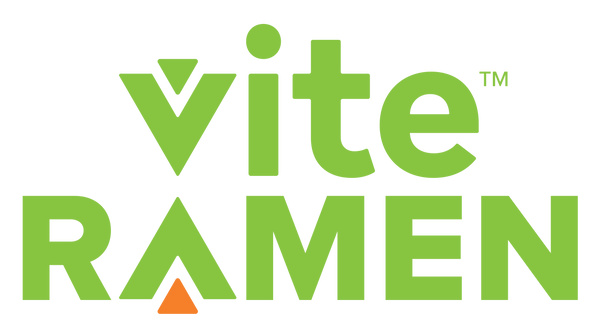
Our Secret Plan To Send Your Noods Faster!
Share

Getting a machine with lasers attached is kinda expensive. Why does that matter?
Currently, we’re working with a semi-automatic machine that's a bit janky. Amethyst, as she’s affectionately called because the label AMETHYST was affixed to her at some point during shipping, arrived many, many years ago with a heavily bent steel frame, tolerances that barely tolerate working at all some days, and a fit and finish that wasn't exactly well…finished. We tried to return her so she could be fixed, or so a new one could be sent, but the company refused.
(We don't work with them anymore.)
Rather than give up and consider her a lost cause, we did what we always do here at Vite Kitchens! We shrugged, rolled up our sleeves, and got to work fixing her ourselves. After countless grueling, late-night tests, repairs, custom work, and processes being implemented, we finally were able to use it.
Sorta…
Years later Amethyst’s still temperamental. She can work perfectly with no assistance one day, then extra humidity for a few hours, or the chains snapping in half, can make the machine crumple in the middle of a busy afternoon.
Because of the tolerances required and the finickiness of pressure screws, we have to hand calibrate rollers to +/- of a gigameter, or 0.1mm, because metal can expand and shrink with heat. It takes quite a bit of technique and training to get this right, and even then we will never be perfect. This can lead to countless throbbing headaches, and hours of frustration and lost time as I run in to repair her or we wait impatiently for newly fabricated parts.
The new machine is supposed to be custom-built to our specifications, brand new, and instead of hand adjusting the roller pressure to determine dough sheet thickness, it utilizes laser calibration.
(Yeah, the lasers were a big reason why we went with this machine over one similar to Amethyst.)
There’s even tiny motors inside the pressure screws, and computer guidance instead. This is supposed to significantly reduce headaches with calibration, as all and any problems that Amethyst currently exhibits would then be finely tuned and calibrated automatically by the computer. The new machine also has other fancy features, like a dough lift, a better mixer (in theory), and more accurate noodle portioning and cutting.
However, all of this does come at a cost, some of which aren't monetary. She’s a new machine with her own set of problems we don’t know how to solve yet. New motors, lasers, and computers mean more complex and difficult solutions. Amethyst, for all her issues, is a purely analog, mechanical design, so it was easy to trace the issue as there are only so many moving parts.
Similarly, additional parts in the new machine means it takes up a larger amount of room, and we would need to completely reconfigure our space to compensate. Time for testing also needs to be accounted for, and we can’t house both machines at the same time, so there needs to be planned downtime for this machine to come in and get to noodling.
Sure, there are a lot of potential challenges ahead, but in theory, if the machine were to become operational as planned, we would have significantly more consistent production processes, fewer headaches, and (fingers crossed) not as many repairs to do.
Wanna help out and get us one step closer to putting our laser-filled noodle maker into action? Order more noodles! It’ll help us keep delivering the products you love in the best ways possible.
(And figure out whether or not we can play laser tag with the new noodle maker).
